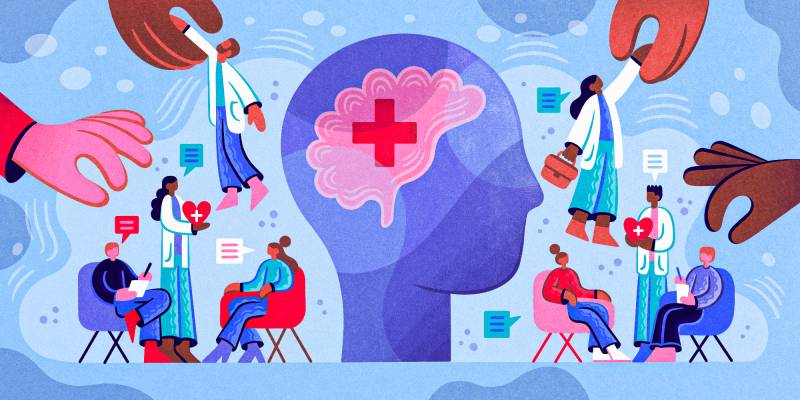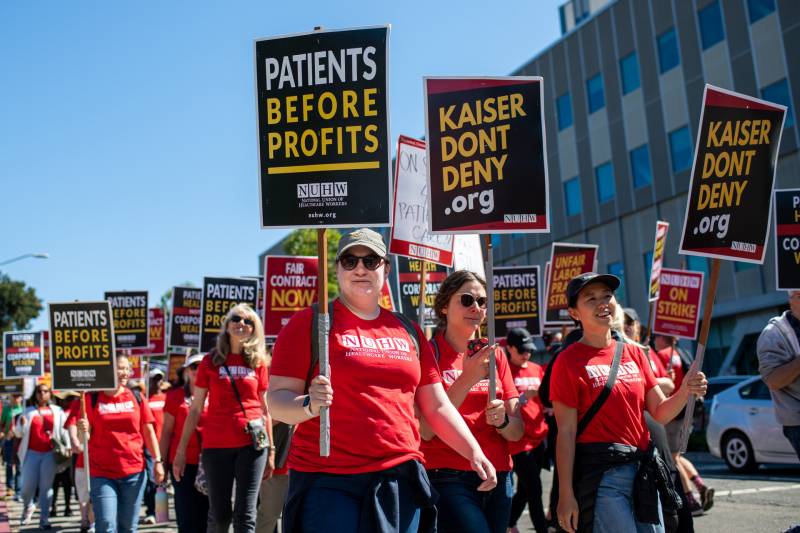In a 2018 report on the behavioral health workforce shortage, Janet Coffman of UCSF also raised the concern that 45% of psychiatrists and 37% of psychologists would likely be retiring within a decade. The pandemic has accelerated this trend, she said.
Many clinicians say they’re simply exhausted. It’s not just that more people need help, but that many of them are coming in sicker, with mental health issues that have gone untreated.
“Our patient population has become so much more difficult to work with than it used to be a decade ago,” said Randall Hagar, legislative advocate and policy consultant for the Psychiatric Physicians Alliance of California.
As openings go unfilled, those who remain are left to carry more of the weight, he said.
Another problem Hagar and others mention: paperwork. Doctors spend some 40% of their time on paperwork, he said.
Many clinicians, especially providers of color, also say they are simply not getting enough emotional support from their employers. Dominguez, the Kaiser therapist, said she founded La Clinica, a nationally recognized pilot program to serve Spanish-speaking clients, in 2016. When tragedies happen in the community, she said, they affect clinicians, too. But, “you’re just expected to plug along and keep going,” she said.
Continually witnessing trauma can be exhausting, said Jeff Capps, a social worker with Pacific Clinics in Los Angeles. He emphasizes the need to make the work more sustainable for clinicians. That includes better pay.
“Sometimes in our field, the assumption is that since you get value out of your work, you don’t need to be as compensated,” he said.
A 2019 report by the health care consulting firm Milliman found that commercial plans in California, when setting rates, pay primary care providers an average 15% more than they pay behavioral health care providers.
Luke Bergmann, San Diego County’s director of behavioral health, said his county’s report on the provider shortage showed that, in some cases, people chose to work at Panda Express instead of substance use disorder clinics “because they simply cannot make as much.”
“People talk about loving the work,” he said. “For people to leave this work is an incredible emotional sacrifice.”
Candy Curiel, clinical director of Pacific Clinics for the Inland Empire, said inflation is making the situation even worse.
“Everything is so costly at this point, people feel they need to seek more money,” she said.
Everyone is competing with everyone else. Is this a zero-sum game?
Michelle Cabrera, executive director of the County Behavioral Health Directors Association of California, said the state’s mental health care system is so overwhelmed, everyone is poaching from each other.
“Let me be clear: It is a zero-sum game,” she said. “There’s only so many licensed or competent professionals in the state of California to do these jobs.”
In August, state Superintendent of Public Instruction Tony Thurmond announced that he had secured funding to hire 10,000 additional mental health clinicians to serve the state’s students. That effort is key to the Department of Education’s push to increase mental health care provided in schools.
Adrienne Shilton, senior policy advocate for the California Alliance of Child and Family Services, called the $200 million to establish a new scholarship program for master’s-level clinicians “a big win.”
But for Cabrera, the announcement “just puts fear at the heart of county behavioral health.”
She wonders how counties can possibly compete.
“I don’t know that we’ve really had a reckoning yet on the degree to which demand so far exceeds the available supply of providers in our state,” she said.


